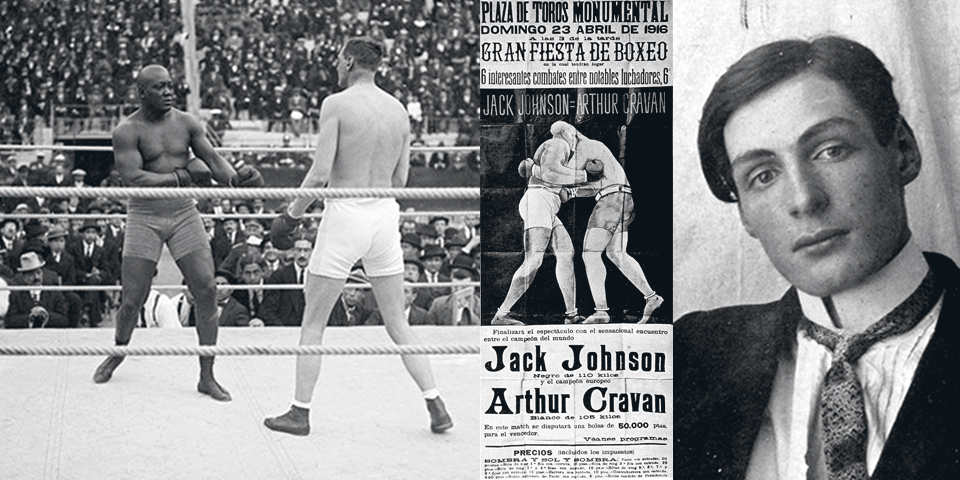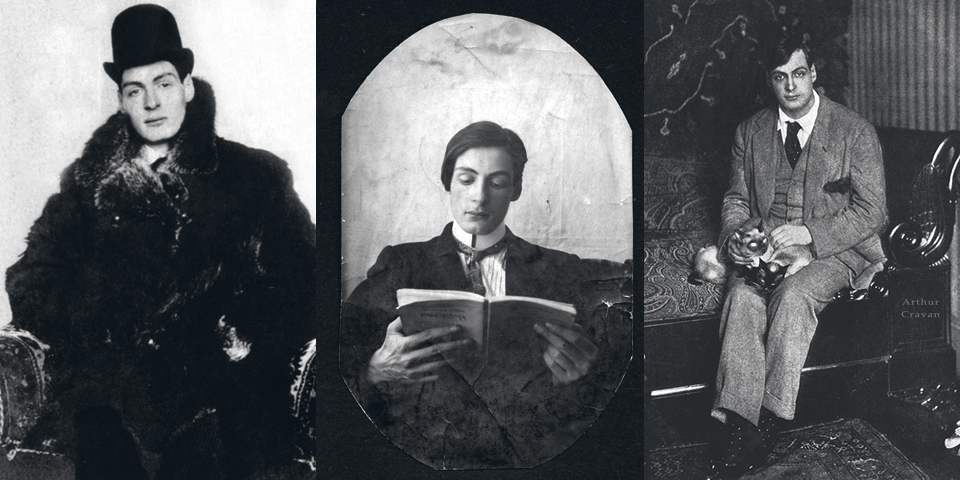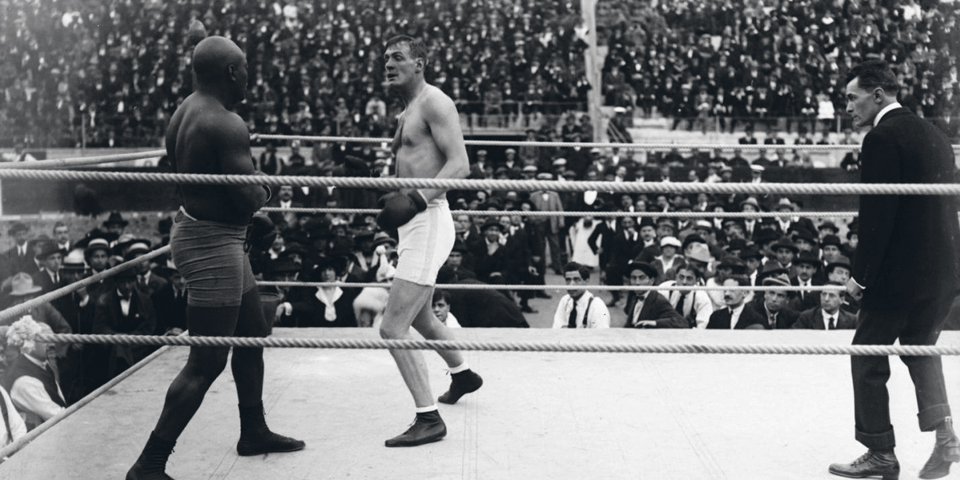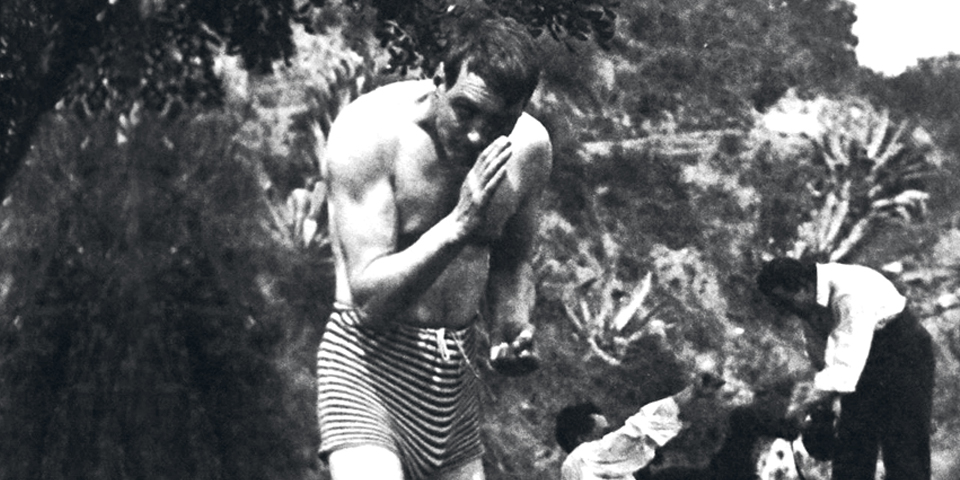IT’S ABOUT ART, MUSIC & LITERATURE
ARTHUR CRAVAN
THE MYTH
Arthur Cravan was born and educated in Lausanne, Switzerland, then at an English military academy from which he was expelled after spanking a teacher. After his schooling, during World War I, he travelled throughout Europe and America using a variety of passports and documents, some of them forged. He declared no single nationality and claimed instead to be A citizen of twenty countries.
Le scandale Arthur Cravan [émission radio France Culture, 2014]
“Every great artist has the sense of provocation.”
The Only Known Footage of Cravan at Boxing in Spain 1916
Cravan set out to promote himself as an eccentric and an art critic, though his interest was showing off a powerful, striking personal style rather than discussing art. He staged public spectacles and stunts with himself at the centre, once acting on the front of a line of carts where he paraded his skills as a boxer and singer, although he never pursued either of these activities on stage with anyone else. His style of looking for the striking and shocking had some roots in the contemporary cult of the young man of action [athletes, soldiers, flamboyant artists] but strongly prefigured dadaism. From 1911 to 1915 he published a critical magazine, Maintenant! [Now!] which appeared in five issues. It was gathered together and reprinted by Eric Losfeld in 1971 as J’étais Cigare in the dadaist collection Le Désordre. The magazine was designed to cause sensation and in a piece about the 1912 arts salon he criticized a self–portrait by Marie Laurencin, remarks which drove her lover and influential modernist critic Guillaume Apollinaire to fury and a bid for a duel. But his rough vibrant poetry, and provocative, anarchistic lectures and public appearances [often degenerating into drunken brawls] also earned him the admiration of Marcel Duchamp, Francis Picabia, André Breton, and other young artists and intellectuals.
After the First World War began, Cravan left Paris to avoid being drafted into military service. On a stopover in the Canary Islands a boxing match was arranged between Cravan and the reigning world champion Jack Johnson to raise money for Cravan’s passage to the United States. Posters for the match touted Cravan as European champion. Johnson, who didn’t know who the man was, knocked Cravan out solidly and in his autobiography noted that Cravan must have been out of training.
In retrospect, the incident has been cited as an archetypal example of the anyone can reinvent himself philosophy found in later artistic movements–Cravan didn’t need to be a professional boxer to lay a claim on being world champion. His personal style involved continuous re — invention of his public persona, and outrageous statements and boasts. His pride in being the nephew of Oscar Wilde even produced hoaxes–documents and poems–Cravan wrote and then signed Oscar Wilde. In 1913 he published an article in his self–edited review Maintenant claiming that his uncle was still alive and had visited him in Paris. The New York Times published the rumor, even though Cravan and Wilde never met.
After arriving in New York in 1914, Craven met the poet Mina Loy in 1917, who considered him the love her life. Together, despite Cravan’s links to Dada, they refused to identify with any movement, fought against war and all notions of conventionality, then moved on to Mexico where they married. When the United States entered the war, as draft — dodgers they planned a trip from Mexico to Argentina and Cravan set out alone on a sailboat they had fixed up in the Mexican town of Salina Cruz. Without enough money for both of them to book passage on the same vessel, Loy took the trip on a regular ship, always hoping Cravan would resurface. Cravan never arrived and it is presumed that he capsized and drowned in a storm raging at sea in the following days.
Mina Loy
For those who still believe in the evolution of art as a series of fractures from its own history, Cravan’s strange disappearance provides a kind of Modernist King Arthur fable — a sleeping saviour and guiding spirit who’ll return to save the kingdom at its hour of need. Like Bas Jan Ader, that other Romantic who went missing on a solo seafaring mission, Cravan left no corpse and no substantial body of evidence — a little poetry, a journal satirizing bohemian mores — but instead vaporized into the archetype of a hundred avant — garde firebrands. Part Hemingway, part Lenny Bruce, this consummate cult hero waits to be canonized within an inch of his own myth, like every other 20th — century macho radical, but the vacuum of information surrounding his life means that he remains a frustrating enigma. Which is just how Arthur Cravan, Fabian Avenarius Lloyd and the Dowager Empress of Iceland would have wanted it. “He puts the world to the test of intuition”.
Roger Conover
‘I know very little about “the poet with the shortest hair in the world”. To be honest, few people are able to bridge the chasms between the scarceoutcrops of fact surrounding his life, and fewer still are quite sure how solid those footholds really are.’
“When America began conscription towards the end of the war, Cravan hotfooted it to Canada, using [according to Buffet — Picabia] the papers of an alcoholic friend who had been killed off by orgiastic excess. A postcard to her suggests Cravan made it at least as far as Newfoundland. The last anyone saw of him was in Salina Cruz, Mexico, in 1918. With his wife, the Modernist poet [and another story] Mina Loy, Cravan planned to head down to Buenos Aires with their new — born daughter. Loy and the baby travelled ahead while Cravan prepared a small yacht with which to make the journey. Both he and the boat vanished without a trace. His body was never recovered.”
Gabrielle Buffet–Picabia
“He’s a slippery cult hero cliché who rivals Elvis in posthumous sightings. We know that Fabian Avenarius Lloyd, Oscar Wilde’s nephew, was born to English parents sometime around 1887. We also know that Eduoard Archinard was born the same year, as were Isaac Cravan, Dorian Hope, Sebastian Hope, B. Holland, Robert Miradique, Marie Lowitska, W. Cooper and James M. Hayes. Some time around the start of the First World War all of the above went under the name Arthur Cravan.”
Mark Polizzotti
“To some he was a poet. Others knew him as a forger. To the world heavyweight boxing champion Jack Johnson he was a friend in pugilism. Thief, chauffeur, master of disguise, draft dodger, fruit picker, butcher, sailor, professor and lumberjack were his other known trades. His first language was French and his last known driving licence was issued in Berlin. As a teenager Lloyd had bummed his way across the States, and, at some point later, studied in Europe. By the outbreak of the First World War, he was living in France as Arthur Cravan, under a Swiss passport. Caring little for nationalist squabbles, or any kind of nationhood for that matter, he disguised himself as a soldier and jumped the border into Spain, before resurfacing in Barcelona sometime during 1916. Broke and in need of some hard cash to get to New York, he staged a boxing match with his hero, Jack Johnson. Cravan turned up blind drunk, Johnson swiftly KO’d him, and the poet — boxer used his cut of the takings to hustle a transatlantic fare.”















